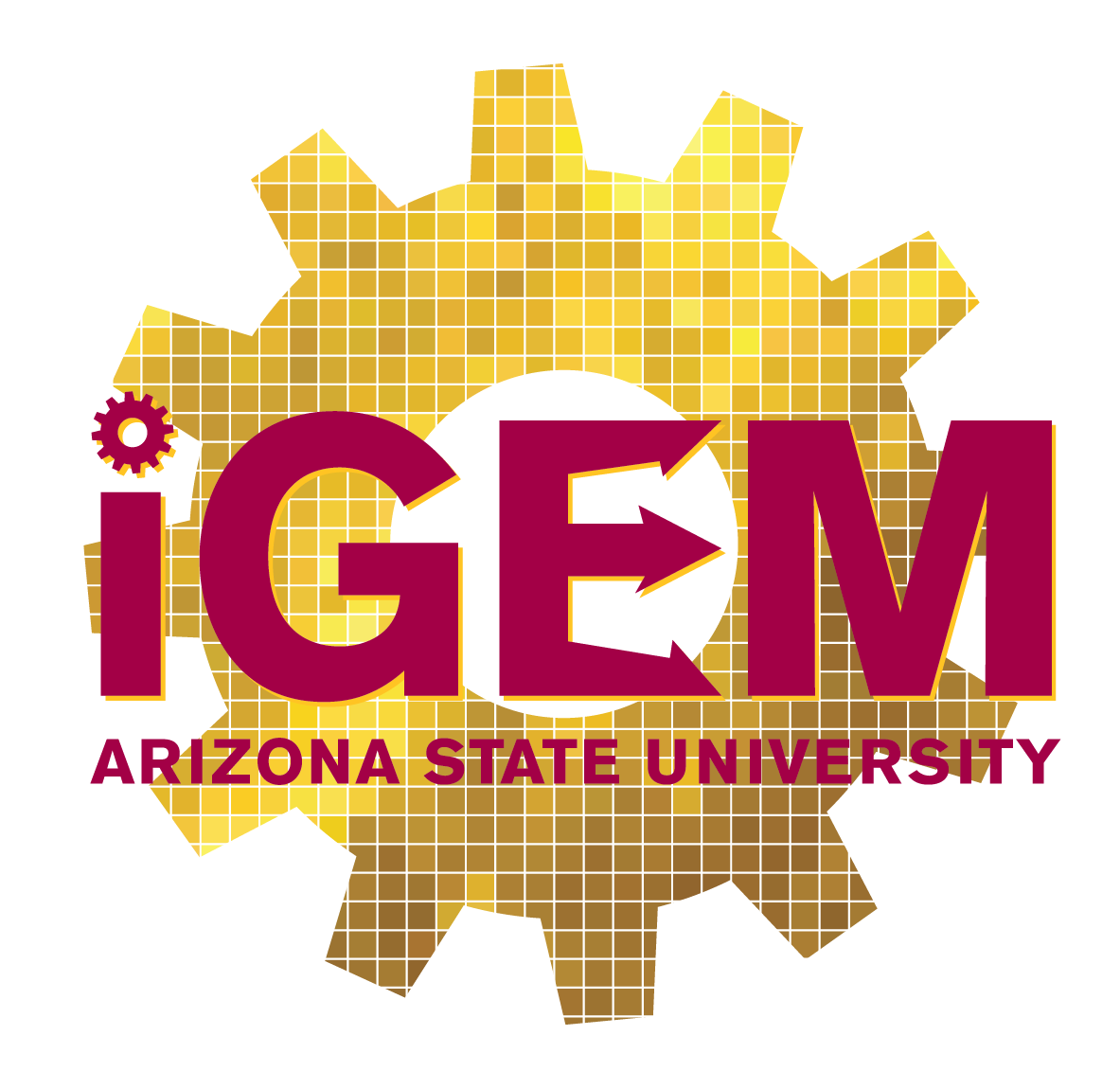Team:Arizona State/Safety
From 2011.igem.org
|
|
Researcher SafetyAll the organisms utilized in the Wang Lab comply with biosafety level 1 (BSL1) and do not possess the potential to cause disease in individuals. All organisms, despite having no association with disease, are treated as potential pathogens, thus personal protective equipment such as gloves, laboratory coats, and protective eyewear/goggles are used to prevent contact with bacteria and yeast samples in the lab. Standard protocols were followed for all genetic manipulation, including PCR, plasmid assembly (restriction, ligation, and transformation), and DNA extraction. These protocols standardize specific safety procedures encountered in day to day labwork. The following organisms are present in the lab and directly utilized in our project:
Strains L. innocua CLIP11262 and B. halodurans C-125 were both received from ATCC[http://www.atcc.org/], which classifies both organisms as BSL1. The ATCC Biosafety page[http://www.atcc.org/CulturesandProducts/TechnicalSupport/BiosafetyLevels/tabid/660/Default.aspx] states that BSL1 organisms and reagents, "are not known to cause disease in healthy adult humans". Biosafety trainingAll members of our team were required to attend biosafety and bloodborne pathogen training according to Arizona State policy before working in the lab. This course satisfies the OSHA Bloodborne Pathogens training requirement as well as the Biosafety requirements for working with recombinant DNA. The Laboratory-Specific biosafety training checklist was followed[http://www.asu.edu/uagc/EHS/forms/asu_lab_specific_biosafety_training.pdf] to ensure all team members were adequately trained. Biological ReagentsReagents and equipment including solid and liquid bacterial growth media, and yeast culture media, micropipette, volumetric pipette tips and centrifuge tubes are autoclave sterilized (heated to 121 degrees celsius at 15 PSI) both preceding and following use, ensuring there is no threat of waste contamination of outside the lab. This is in accordance with Arizona State University's biological waste procedures[http://cfo.asu.edu/ehs-biowaste-compliance-guideline]. Flammable Reagent SafetyReagents that are potentially flammable (e.g. ethanol and isopropyl alcohol) are stored in a flame protective cabinet. Corrosive and Noxious Reagent SafetyReagents that have corrosive and/or noxious fumes (e.g. bleach solutions and phenol-chloroform) are kept within a chemical fume hood to prevent inhalation and physical contact. Public SafetyThere is minimal risk associated with the release of the aforementioned organisms. The recombinant DNA (rDNA) experiments conducted in the laboratory provide ampicillin, kanamycin and/or chloramphenicol resistance to E.coli K12 MG1655, E.coli BL21(DE3) and E.coli NEB-10 Beta to select for plasmids. Under the circumstances that any of these genetically altered organisms were released they would have minimal potential for pathogenesis. In accordance with Arizona State University’s Environmental Health & Safety policy, “Nothing in the trash, nothing down the drain”, we autoclave and bleach sterilize all waste from recombinant DNA experiments. This reduces the likelihood of accidental release. Under the circumstances of “designed” release, the organisms and all rDNA products present no possibility of harming the outside population and ecosystem. Our iGEM team, faculty mentor, and department lab safety manager, find no foreseeable public health threat associated with the organisms and recombinant DNA project utilized by our team. Environmental SafetyOur project involves manipulating the CRISPR pathway as a gene regulation tool. The CRISPR system is naturally present in many prokaryotes and nearly all archea. Introducing a CRISPR locus into bacteria lacking CRISPR has the potential to increase phage resistance, and therefore fitness, through incorporation of new spacers. This is unlikely to have a significant effect on pathogenicity, especially when the spacers are designed to target relatively benign gene products such as GFP, as in our proof of concept. Currently our E. coli and B. halodurans constructs are engineered to omit two genes (CAS1 and CAS2) implicated in the incorporation of new spacers into CRISPR arrays. We also test these constructs in BL21, a laboratory strain of E. coli used for expression that has no native CAS genes. This minimizes the possibility of unwanted targeting that could potentially increase pathogenicity (although there is no evidence to suggest that this would be a favorable event). We envision CRISPR as a tool that is used primarily in the laboratory. CRISPR arrays and CAS genes are highly susceptible to horizontal gene transfer. New spacers are constantly incorporated in wild-type strains, and CAS genes are easily lost in the absence of selection pressure. Because of this volatility the utility of CRISPR-engineered strains of bacteria in the environment seems minimal. Biosafety Regulations and Provisions
|
 "
"
